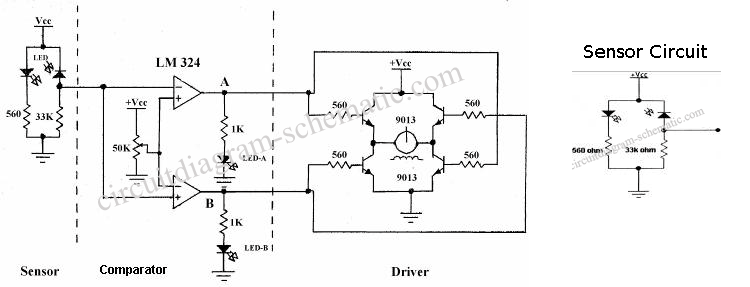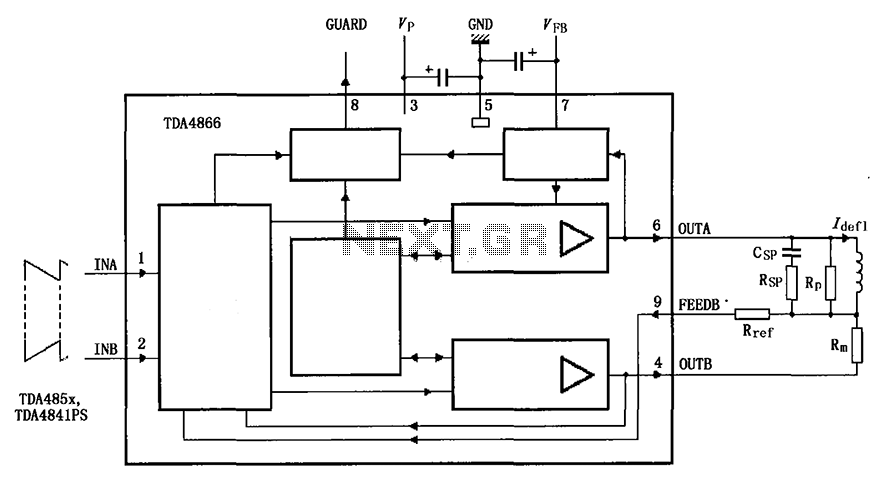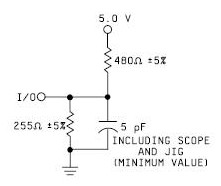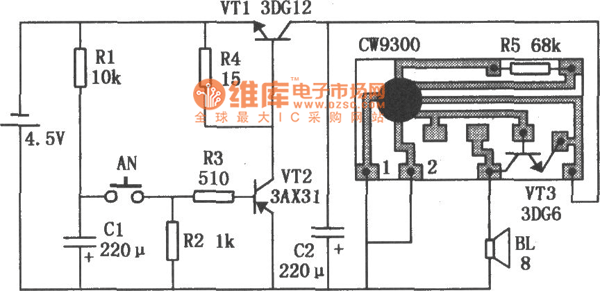
Sensor Circuit Of Analog Line Follower Robot

The following circuit illustrates the sensor circuit of an analog line follower robot. Features include control by a microcontroller and a sensor circuit.
The sensor circuit for an analog line follower robot is designed to detect the presence of a line on the ground, typically represented by contrasting colors, such as black and white. The primary components of this circuit include an array of infrared (IR) sensors, a microcontroller for processing sensor inputs, and motor driver circuits to control the robot's movement.
The IR sensors are strategically positioned to sense the line beneath the robot. When the robot is over the line, the IR sensors detect the change in reflected light intensity. This information is then relayed to the microcontroller, which processes the signals to determine the robot's position relative to the line. The microcontroller is programmed with algorithms that dictate how the robot should respond to the sensor inputs, allowing it to adjust its path accordingly.
The motor driver circuits are responsible for controlling the speed and direction of the motors based on the microcontroller's output. Typically, a dual H-bridge motor driver is employed to allow for bidirectional control of the motors, enabling the robot to turn left, right, or move forward and backward as needed.
Overall, the sensor circuit of an analog line follower robot is a crucial component that integrates sensing, processing, and actuation to achieve autonomous navigation along a predefined path. Proper calibration of the sensors and tuning of the control algorithms are essential for optimal performance of the robot in various environments.The following circuit shows about Sensor Circuit Of Analog Line Follower Robot. Features: controlled by a microcontroller, sensor circuit, a set .. 🔗 External reference
The sensor circuit for an analog line follower robot is designed to detect the presence of a line on the ground, typically represented by contrasting colors, such as black and white. The primary components of this circuit include an array of infrared (IR) sensors, a microcontroller for processing sensor inputs, and motor driver circuits to control the robot's movement.
The IR sensors are strategically positioned to sense the line beneath the robot. When the robot is over the line, the IR sensors detect the change in reflected light intensity. This information is then relayed to the microcontroller, which processes the signals to determine the robot's position relative to the line. The microcontroller is programmed with algorithms that dictate how the robot should respond to the sensor inputs, allowing it to adjust its path accordingly.
The motor driver circuits are responsible for controlling the speed and direction of the motors based on the microcontroller's output. Typically, a dual H-bridge motor driver is employed to allow for bidirectional control of the motors, enabling the robot to turn left, right, or move forward and backward as needed.
Overall, the sensor circuit of an analog line follower robot is a crucial component that integrates sensing, processing, and actuation to achieve autonomous navigation along a predefined path. Proper calibration of the sensors and tuning of the control algorithms are essential for optimal performance of the robot in various environments.The following circuit shows about Sensor Circuit Of Analog Line Follower Robot. Features: controlled by a microcontroller, sensor circuit, a set .. 🔗 External reference





